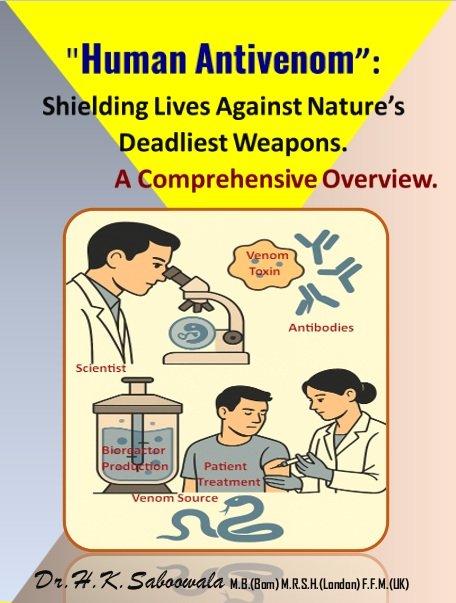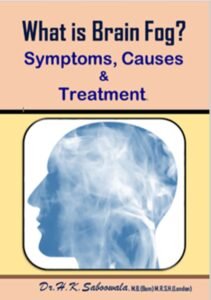— A Comprehensive Informative Overview —
By Dr. H.K. Saboowala, M.B.(Bom), M.R.S.H.(London), F.F.M.(UK)
For Medical Professionals, Researchers and Curious Minds.
Introduction.
Human antivenom stands at the center of modern medical innovation, acting as a lifeline for patients bitten or stung by deadly creatures.
Despite its life-saving power, few people understand how it works, or just how much science and danger are packed into a single vial.
In this medical blog , it is strived to unveil five shocking facts about human antivenom and its vital role in shielding lives against nature’s most lethal biochemical weapons.
Fact #1: Antivenom Is Made from Animal Antibodies
Yes, it starts with animals—usually horses or sheep. Scientists inject small, controlled doses of venom into these animals and harvest the antibodies they produce. After purification, these antibodies become the key ingredients in antivenom
Fact #2: One Antivenom Doesn’t Work for All Venoms
Antivenom is highly specific. An antidote for cobra venom won’t work for a rattlesnake bite.
This makes regional production critical—each country must develop antivenom based on its local venomous species.
This lack of universality is a global public health challenge.
Fact #3: It Can Trigger Dangerous Allergic Reactions
Ironically, while saving lives, antivenom can also cause severe allergic reactions—including anaphylaxis. That’s why it’s administered in hospitals, where patients can be closely monitored.
Fact #4: Delays in Administration Lead to Permanent Damage
The sooner antivenom is given, the higher the survival rate and the lower the chance of permanent damage like tissue necrosis or amputation.
In remote areas, lack of access often turns survivable bites into fatal events.
Speed can mean the difference between recovery and tragedy.
Fact #5: It Saves Over 100,000 Lives Each Year
Despite its limitations and risks, human antivenom saves more than 100,000 lives annually worldwide. In regions like sub-Saharan Africa, India, and South America, it is often the only defense against venomous wildlife.
Did You Know?
- Over 5 million snakebites occur annually worldwide.
- Up to 138,000 people die each year due to lack of timely antivenom.
- WHO has declared antivenom shortages a global health crisis.
- Investment in synthetic and recombinant antivenom is growing rapidly.
These facts highlight the urgency and relevance of continued research in antivenom therapies.
Conclusion: A Breakthrough Worth Preserving
Human antivenom is one of modern medicine’s most underappreciated breakthroughs. Ongoing research is now focused on making antivenoms safer, more universal, and accessible to remote communities.
With continued investment and innovation, these biological shields will remain a critical line of defense against nature’s deadliest toxins.
Now Available: Explore the full eBook on this topic at drhakimemedivault.com
Stay informed. Stay protected.
— Dr. H.K. Saboowala
Why Read This informative eBook?
Whether you’re a:
- Busy physician in high-risk areas
- Researcher in toxicology or immunology
- Or simply staying updated with biotech frontiers
This concise eBook presents essential informative knowledge, supported by clear diagrams and visuals—with zero fluff.
Final Word
Human-derived antivenom isn’t future science—it’s a practical advancement already saving lives.
This eBook distills its science, relevance, and real-world impact into a 30-minute read.

Now Available at: https://drhakimemedivault.com

“QR code” for purchasing the TITLE and “More Books “Linking to full CATALOGUE.
Medical Review.
“A remarkably clear explanation of a highly advanced topic. Dr. Hakim’s books never fail to deliver.”
— Dr. R. Mehta, Radiologist
Thank You Note
Thank you to all our esteemed readers and medical professionals for your continuous support.
Your feedback inspires us to publish more valuable and cutting-edge content.
Dr. H.K. Saboowala, M.B.(Bom), M.R.S.H.(London), F.F.M.(UK)



